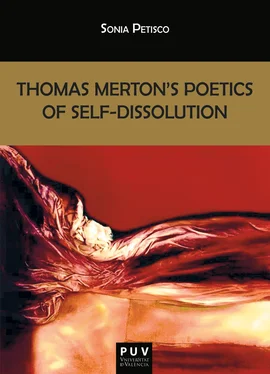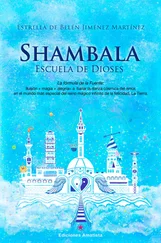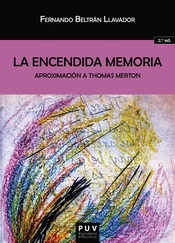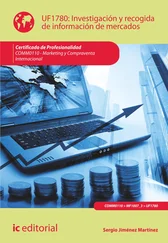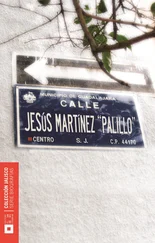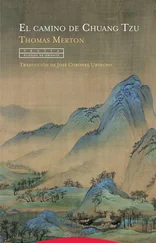1944 - 19 March - made simple vows, published Thirty Poems
1946 - A Man in the Divided Sea
1947 - 19 March - solemn vows, published Exile Ends in Glory
1948 - Publication of best–seller autobiography, The Seven Storey Mountain and What Are These Wounds?
1949 - 26 May - ordained priest; Seeds of Contemplation ; The Tears of the Blind Lions ; The Waters of Siloe
1951 - 1955 - Master of Scholastics (students for priesthood)
1951 - The Ascent to Truth
1953 - The Sign of Jonas; Bread in the Wilderness
1954 - The Last of the Fathers
1955 - No Man is an Island
1955 - 1965 - Master of Novices
1956 - The Living Bread
1957 - The Silent Life; The Strange Islands
1958 - Thoughts in Solitude
1959 - The Secular Journal of Thomas Merton; Selected Poems
1960 - Disputed Questions; The Wisdom of the Desert
1961 - The New Man; The Behavior of Titans
1961 - Emblems of a Season of Fury; Life and Holiness
1964 - Seeds of Destruction
1965 - Gandhi on Non–Violence; The Way of Chuang Tzu; Seasons of Celebration
1965 - 1968 - lived as a hermit on the grounds of the monastery
1966 - Raids on the Unspeakable; Conjectures of a Guilty Bystander
1967 - Mystics and Zen Masters
1968 - Monks Pond; Cables to the Ace; Faith and Violence; Zen and the Birds of Appetite
1968 - 10 December - died at Bangkok, Thailand, where he had spoken at a meeting of Asian Benedictines and Cistercians.
Posthumous Publications:
1969 - My Argument with the Gestapo ; Contemplative Prayer; The Geography of Lograire
1971 - Contemplation in a World of Action
1973 - The Asian Journal of Thomas Merton; He is Risen
1976 - Ishi Means Man
1977 - The Monastic Journey; The Collected Poems of Thomas Merton
1979 - Love and Living
1980 - The Non–Violent Alternative
1981 - The Literary Essays of Thomas Merton; Day of a Stranger, Introductions East and West: The Foreign Prefaces of Thomas Merton (reprinted in 1989 under title “Honorable Reader“: Reflections on My Work)
1982 - Woods, Shore and Desert: A Notebook, May 1968
1985 - The Hidden Ground of Love: Letters on Religious Experience and Social Concerns (Letters, 1)
1988 - A Vow of Conversation: Journals 1964–1965; Thomas Merton in Alaska: The Alaskan Conferences, Journals and Letters
1989 - The Road to Joy: Letter to New and Old Friends (Letters, II)
1990 - The School of Charity: Letters on Religious Renewal and Spiritual Direction (Letters, III)
1993 - The Courage for Truth: Letters to Writers (Letters, IV)
1994 - Witness to Freedom: Letters in Times of Crisis (Letters, V)
1995 - Run to the Mountain: The Story of a Vocation (Journals, I: 1939–1941)
1996 - Entering the Silence: Becoming a Monk and Writer (Journals, II: 1941–1952); A Search for Solitude: Pursuing the Monk’s True Life (Journals, III: 1952–1960); Turning Toward the World: The Pivotal Years (Journals, IV: 1960–1963)
1997 - Dancing in the Water of Life: Seeking Peace in the Hermitage (Journals, V: 1963– 1965); Learning to Love: Exploring Solitude and Freedom (Journals VI: 1966–1967)
1998 - The Other Side of the Mountain: The End of the Journey (Journals VII: 1967–1968)
1999 - The Intimate Merton: His Life from His Journals
2001 - Dialogues with Silence
2003 - The Inner Experience . Seeking Paradise: The Spirit of the Shakers
2004 - Peace in a Post–Christian Era
2005 - In the Dark Before Dawn: New Selected Poems of Thomas Merton ; Cassian and the Fathers
2006 - The Cold War Letters ; Pre–Benedictine Monasticism
2008 - Introduction to Christian Mysticism ; A Life in Letters: The Essential Collection
2009 - The Rule of St. Benedict. Compassionate Fire: The Letters of Thomas Merton and Catherine De Hueck Doherty
2010 - Monastic Observances
2012 - The Life of the Vows
2014 - Thoughts in Solitude and New Seeds of Contemplation - audio books; Seven Storey Mountain, Centenary Edition
2015 - Ishi Means Man; What Are These Wounds; Exiles Ends in Glory
1Source: “Merton Center web site: http://merton.org/chrono.aspx. Used with permission.”
Chapter 1
Thomas Merton’s Poetic Evolution
from World’s Denial to an Experience of Universal Love 1
Geography comes to an end
Compass has lost all earthly north
Horizons have no meaning
Nor roads an explanation. 2
These intriguing apocalyptic lines from Merton’s Early Poems (1940-1942) could well summarise his vision of the secular world at the time he entered the monastery of Gethsemani in 1941. They depict a kind of waste land, a barren scenery where people have lost the capacity to interpret their own existence, and stand as a good testimony of the need to give a new shape to experience.
It is precisely this urgency for creating new maps, new cartographies, new dwellings, and most particularly, for a radical transformation of human consciousness that is the main force which might have led Merton to choose the silent life and write a very fertile poetic work by means of which he tried to give birth to a novel geography: the geography of the Spirit.
The poet meditates, sings, suffers and re-creates the world from his paradisus claustralis , from the pristine and ineffable void of his innermost ground of being. After many years of inner conflict between his two apparently contradictory vocations – the monastic and the artistic – he finally renders a truly significant poetry which is a faithful expression of his spiritual evolution from solitude to solidarity, from contemptus mundi to universal love.
During the 40s, Merton published several books of poems; apart from the already mentioned Early Poems , he also wrote Thirty Poems (1944), A Man in the Divided Sea (1946), Figures for an Apocalypse (1947) or The Tears of the Blind Lions (1949). Most of them show the clear division he made between the sacred and the profane world, between silence and writing, between the religious and the aesthetic, between contemplation and action. His early poems trace back his years as student in Oakham School (England) and his stay at Greenwich Village. Together with others composed later on, they reflect the poet’s critical attitude against the shadows and false values prevailing in Western culture:
Body is truth, truth is body. Fat is all
We grow on earth, or all we breed to grow […]
Beauty is troops, troops beauty. Death is all
We grow on earth, or all we breed to grow. 3
we read in his poem “The Philosophers,” an obvious reference to John Keats’s “Ode to a Grecian Urn.” 4In the midst of this materialistic and violent context, however, the poet compares himself with a hidden seed, “buried in the earth/waiting for the Easter rains/to drench me in their mirth/and crown my seedtime with some sap and growth.” Merton’s monastery could be seen as the chosen place for this “burial” and this “waiting” for the vivifying waters of solitude and silence. It was considered by the poet as a more authentic space than the city which he regarded as “a stubborn and fabricated dream,” 5a world of mechanical fictions in which people are imprisoned in “the monkey-houses of their office-buildings and apartments,” 6living in a womb of collective illusion where freedom remains abortive and where distraction – the greatest of our miseries – helps people elude their true human task: contemplation understood as “the fullness of the Christ life in the soul.” 7
Читать дальше
